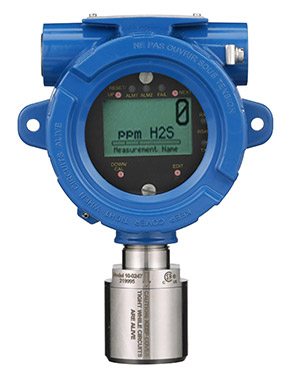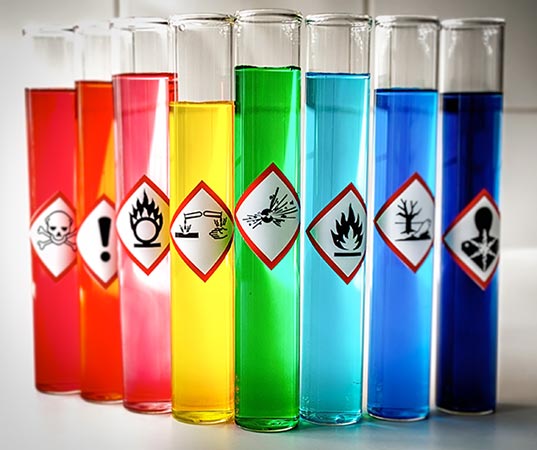Toxic and Combustible Gases – Safety is Paramount
- By : PureAire Monitoring Systems
- Posted on : February 12, 2022
- News Room
On January 31, 2022, a fire at a North Carolina fertilizer manufacturing facility caused officials to urge residents living nearby to stay away from their homes due to an increased risk of a possible explosion at the facility. People with respiratory issues were likewise advised to take precautions to minimize their potential exposure to toxic gases.
According to Winston-Salem fire chief William Mayo, there were nearly 600 tons of ammonium nitrate and 5,000 tons of finished fertilizer at the site, enough to cause one of the worst explosions in U.S. history.
Ammonium nitrate is widely used to manufacture fertilizers for commercial and residential use. However, when exposed to extreme heat, ammonium nitrate may produce nitric oxide and ammonia (NH3), which can create not only a toxic environmental situation but also a catastrophic explosion.
What is Nitric Oxide?
Nitric oxide (NO) is a poisonous and highly reactive gas that is colorless at room temperature, with a strong, sweet odor; it can be toxic when inhaled. Although NO is non-flammable, it will react to combustible materials and may increase the risk of fire and explosions if it is exposed to chlorinated hydrocarbons, carbon disulfide, fluorine, alcohol, petroleum, toluene, or ammonia. Nitric oxide can quickly oxidize to form nitrogen dioxide (NO2).
What is Nitrogen Dioxide?
Nitrogen dioxide is a red-brown gas with an irritating, sharp odor. Like nitric oxide, NO2 is non-flammable but can accelerate the burning of combustible materials.
What is Ammonia?
Ammonia (NH3) is a colorless gas with a pungent odor. Ammonia is not highly flammable, but it may react violently when exposed to fluorine, chlorine, nitrogen dioxide, or hydrogen bromide, among other gases. Ammonia can produce poisonous gas during a fire.
Health Hazards
Exposure to nitric oxide, nitrogen dioxide, and ammonia can irritate the eyes, nose, and throat. At higher concentrations, NO, NO2, and NH3 can cause pulmonary edema (a build-up of fluid in the lungs). Prolonged exposure to nitric oxide and/or nitrogen dioxide may reduce the blood’s ability to transport oxygen, causing headaches, fatigue, dizziness, nausea, vomiting, unconsciousness, and even death.
Continued exposure to ammonia may cause asthma-like allergy symptoms and, possibly, permanent lung damage.
Workplace Exposure Limits to Toxic and Combustible Gases
According to the Occupational Safety and Health Administration (OSHA), the permissible exposure limits (PELs) for nitric oxide, nitrogen dioxide, and ammonia are set forth below:
- Nitric Oxide: 25 parts-per-million (ppm) over an 8-hour work shift; it is immediately dangerous to health at 100 ppm
- Nitrogen Dioxide: 5 ppm, not to be exceeded at any time
- Ammonia: 50 ppm over an 8-hour shift.
Monitoring Toxic and Combustible Gases
Nitric oxide, nitrogen dioxide, and ammonia can all react explosively if they mix with incompatible compounds. Further, exposure to fire may produce additional toxic and corrosive gases. To help prevent an accidental leak and risk of explosion, gas cylinders should be stored in cool, well-ventilated areas, away from moisture and direct sunlight.
While nitric oxide, nitrogen dioxide, and ammonia all have strong odors, that is not necessarily an adequate warning of their presence, since prolonged exposure to NO2, NO, and NH3 can desensitize one’s sense of smell, thereby reducing awareness of the exposure.
To detect, and protect against, risks emanating from excessive concentrations of nitric oxide, nitrogen dioxide, or ammonia, best practices include placing toxic/combustible gas detection monitors (containing visual and audible alarms) in locations where NO, NO2, and NH3 may accumulate. The gas detection system should continuously monitor the area and, if gas concentrations exceed the permissible exposure limit, activate an alarm, turn off the gas at the source, and turn on the ventilation system.
PureAire Monitors
 PureAire Monitoring Systems’ ST-48 Gas Detector is perfect for tracking levels of toxic and/or combustible gases including, but not limited to, nitric oxide, nitrogen dioxide, and ammonia.
PureAire Monitoring Systems’ ST-48 Gas Detector is perfect for tracking levels of toxic and/or combustible gases including, but not limited to, nitric oxide, nitrogen dioxide, and ammonia.
The ST-48 is housed in a NEMA 7 explosion-proof enclosure suitable for Class 1, Division 1 and 2, Groups A, B, C, and D, making it ideal for locations where toxic and/or combustible gases are present or may accumulate.
PureAire’s ST-48 offers continuous readings of toxic and/or combustible gases and features an easy-to-read screen, which displays current gas levels, in either ppm or lower explosive limit (LEL), for at-a-glance observation. In the event of an accumulation of gases to an unsafe level, the Detector will set off an alarm, complete with horns and flashing lights, alerting personnel to evacuate the area. The PureAire Gas Detector can likewise be programmed to tie into automatic shut-off valves, and ventilation systems when gas levels reach a user-selectable ppm or LEL.
The ST-48 Gas Detector can connect to multi-channel controllers, a remote display, or into building systems themselves.



